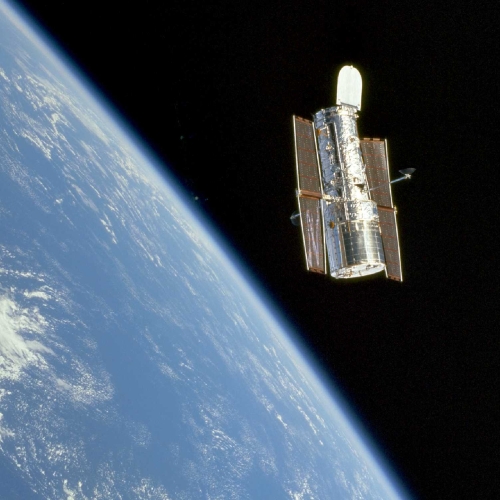Amazon to FCC: Consider limiting SpaceX’s Starlink constellation for our benefit
In a letter sent to the FCC last week, Amazon asked the agency to limit the size of SpaceX’s full constellation so that Amazon will be free to someday launch its own Kuiper constellation.
In the recent letter, Amazon recommends the FCC license a “subset of SpaceX’s proposed system” (as opposed to the whole fleet) to give the agency additional time to consider the “novel challenges” such a significant expansion might present. For example, Amazon believes hundreds to “more than 10,000” of SpaceX’s new satellites could be operating in the altitudes already approved for its Kuiper satellites, which could cause interference in the spectrum and “orbital overlap.” The company claims SpaceX has refused its requests for communication around these concerns as it has urged the FCC to approve its application. It also cites eight other satellite operations who have objected to the plan, including Dish Network, which is currently engaged in a public battle over radio frequencies with SpaceX.
Amazon’s concerns might carry more weight if the launch of its constellation was not so delayed. Both Amazon and SpaceX began development of their satellite constellations at about the same time. Yet, while SpaceX has already launched almost 3,000 satellites, and is providing its service to several hundred thousand customers, Amazon has yet to launch a single satellite.
Thus, though what Amazon is asking the FCC seems reasonable, it is also asking the FCC to block a competitor’s successful operation while it dilly-dallies along, accomplishing little.
This pattern from Amazon fits the pattern of all of Jeff Bezos’s space-related projects: Big promises, little action, and when competitors get things done sue or demand the government play favorites. Sure does not seem to me to be a good long-term business plan.
In a letter sent to the FCC last week, Amazon asked the agency to limit the size of SpaceX’s full constellation so that Amazon will be free to someday launch its own Kuiper constellation.
In the recent letter, Amazon recommends the FCC license a “subset of SpaceX’s proposed system” (as opposed to the whole fleet) to give the agency additional time to consider the “novel challenges” such a significant expansion might present. For example, Amazon believes hundreds to “more than 10,000” of SpaceX’s new satellites could be operating in the altitudes already approved for its Kuiper satellites, which could cause interference in the spectrum and “orbital overlap.” The company claims SpaceX has refused its requests for communication around these concerns as it has urged the FCC to approve its application. It also cites eight other satellite operations who have objected to the plan, including Dish Network, which is currently engaged in a public battle over radio frequencies with SpaceX.
Amazon’s concerns might carry more weight if the launch of its constellation was not so delayed. Both Amazon and SpaceX began development of their satellite constellations at about the same time. Yet, while SpaceX has already launched almost 3,000 satellites, and is providing its service to several hundred thousand customers, Amazon has yet to launch a single satellite.
Thus, though what Amazon is asking the FCC seems reasonable, it is also asking the FCC to block a competitor’s successful operation while it dilly-dallies along, accomplishing little.
This pattern from Amazon fits the pattern of all of Jeff Bezos’s space-related projects: Big promises, little action, and when competitors get things done sue or demand the government play favorites. Sure does not seem to me to be a good long-term business plan.


